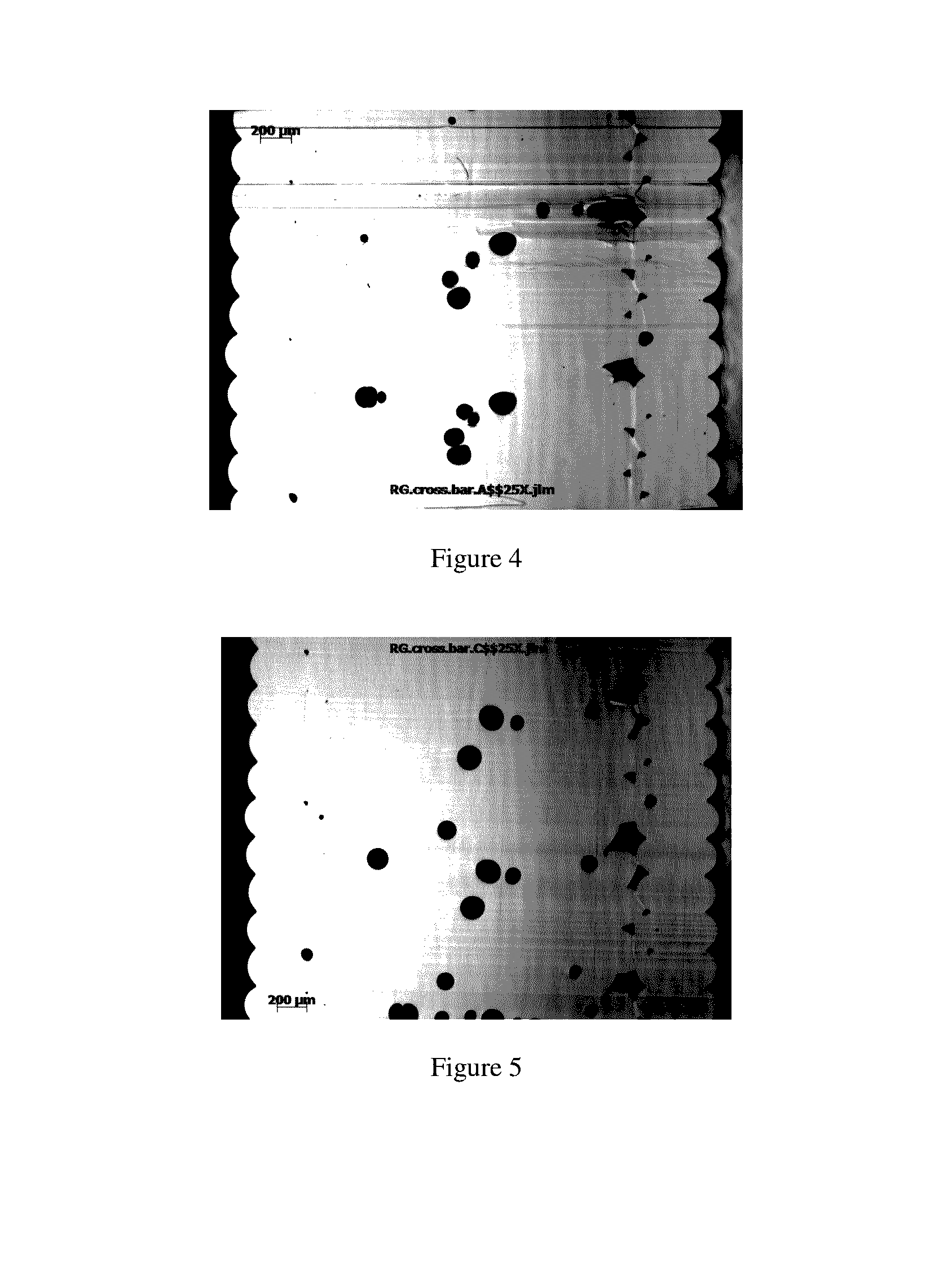Reduced density article
- Summary
- Abstract
- Description
- Claims
- Application Information
AI Technical Summary
Benefits of technology
Problems solved by technology
Method used
Image
Examples
examples
[0042]The following examples illustrate the present invention, but are not meant to be limitations to the scope thereof. Numbers designate examples of the invention; comparative examples are designed by letters.
[0043]ASTM test parts were made using a Stratasys Fortus System 400 MC machine (for example as described in U.S. Pat. Nos. 5,968,561 and 5,866,058) using a round polycarbonate monofilament of 1.75 mm diameter. The bisphenol A polycarbonate (PC) had a weight average molecular weight (Mw) of 22,000 with 0.03 wt. % tris di-tert butyl phenyl phosphite, 0.15 wt. % pentaerythritol tetra stearate (PETS) processing aid and 2 ppm of solvent violet 36 and 1 ppm of pigment blue 60 colorants. This polycarbonate was made using a standard interfacial process. It had a p-cumyl phenol end cap. The phase transfer catalyst was triethylamine, the solvent was methylene chloride. pH was controlled by addition of sodium hydroxide. The polymer solution was washed with acid and water and isolated by...
PUM
| Property | Measurement | Unit |
|---|---|---|
| Temperature | aaaaa | aaaaa |
| Length | aaaaa | aaaaa |
| Length | aaaaa | aaaaa |
Abstract
Description
Claims
Application Information
 Login to View More
Login to View More - R&D
- Intellectual Property
- Life Sciences
- Materials
- Tech Scout
- Unparalleled Data Quality
- Higher Quality Content
- 60% Fewer Hallucinations
Browse by: Latest US Patents, China's latest patents, Technical Efficacy Thesaurus, Application Domain, Technology Topic, Popular Technical Reports.
© 2025 PatSnap. All rights reserved.Legal|Privacy policy|Modern Slavery Act Transparency Statement|Sitemap|About US| Contact US: help@patsnap.com



